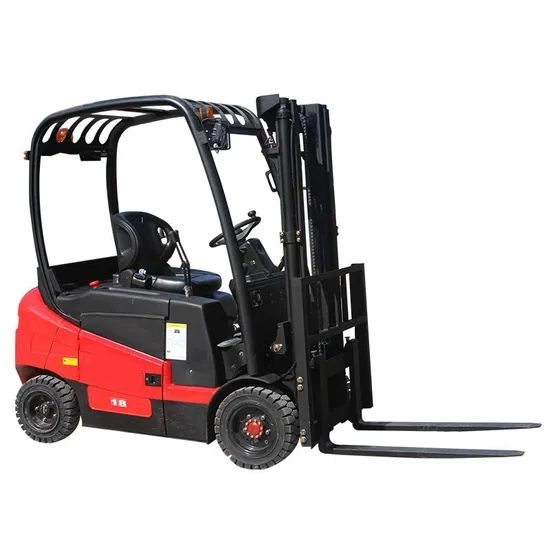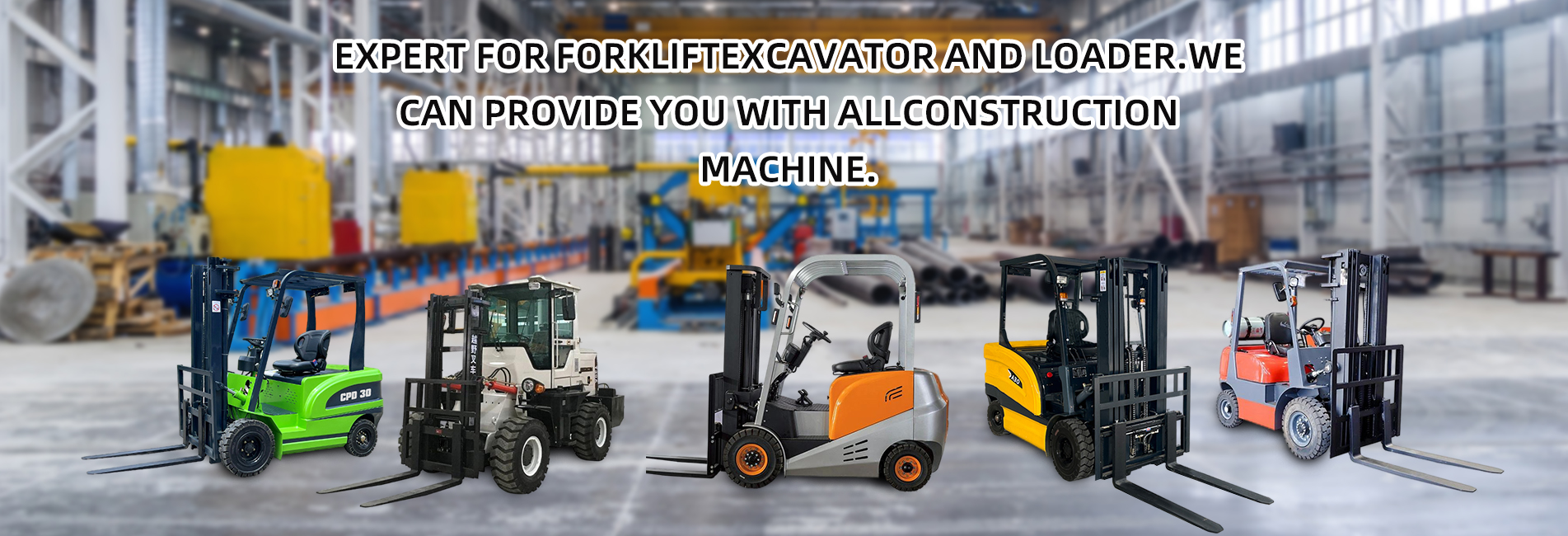Comparison of Endurance Performance Between Diesel Forklifts and Electric Forklifts
The following is a detailed data comparison of the endurance performance between diesel forklifts and electric forklifts. Based on industry field tests, brand parameters, and environmental influencing factors, the analysis is conducted from five dimensions: endurance duration, energy replenishment efficiency, load impact, temperature adaptability, and long-term stability.

I. Endurance Duration and Continuity
| Dimension | Diesel Forklifts | Electric Forklifts (Lithium-ion) | Electric Forklifts (Lead-acid) |
|---|
| Routine Operation Endurance | 8–12 hours (full load); no explicit upper limit for continuous operation (24-hour rotation achievable via refueling) | 6–10 hours (full load); high-end models (e.g., BYD ECB20C) can achieve 10 hours and 12 minutes of endurance at room temperature | 4–6 hours (full load); significantly limited by battery capacity |
| Extreme Operation Endurance | Stable operation even in high-intensity port handling (e.g., continuous handling for 8 hours) | 7 hours and 10 minutes of endurance in low-temperature cold storage (-18°C) when equipped with optional electric heating kits | Endurance may drop to 2–3 hours in low-temperature environments (-10°C) |
| Shutdown Risk | No risk of mid-operation shutdown; only short refueling time required | Strict charging schedule required, otherwise mid-operation power failure and shutdown may occur | Large endurance fluctuations; frequent charging required |
II. Energy Replenishment Efficiency
| Dimension | Diesel Forklifts | Electric Forklifts (Lithium-ion) | Electric Forklifts (Lead-acid) |
|---|
| Energy Replenishment Method | Refueling; completed in 5–10 minutes | Regular charging: 3–8 hours; fast charging: 1–2 hours (e.g., BYD 1-hour fast charge); some high-end models support 15-minute fast charging (Jinxingxiang 2C fast charge) | Regular charging: 8–12 hours; fast charging: 4–6 hours |
| Continuous Operation Solution | Direct refueling; no backup equipment needed | Backup batteries required (cost increases by 30%–50%) or battery swapping technology adopted (e.g., Jinxingxiang 3-minute battery swap) | At least 2 sets of batteries for rotation; occupies warehouse space and involves complex management |
| Energy Replenishment Cost | Highly affected by fuel price fluctuations; annual energy cost is approximately RMB 68,000 (for 8 hours of daily operation) | Stable electricity cost; annual energy cost is approximately RMB 21,000 (under the same operating conditions), saving 69% | Slightly lower electricity cost, but high battery maintenance cost |
III. Impact of Load and Environment
1. Impact of Load on Endurance
- Diesel Forklifts:
- Endurance is approximately 8 hours at full load (100% load) and up to 12 hours at light load (30% load).
- In high-load port scenarios (e.g., continuous handling for 8 hours), the engine temperature remains ≤45°C, with no forced frequency reduction.
- Electric Forklifts:
- Lithium-ion models: Endurance is 6–8 hours at full load and can be extended to 10 hours at light load.
- Lead-acid models: Endurance is 4–5 hours at full load and 5–6 hours at light load.
2. Impact of Temperature on Endurance
| Ambient Temperature | Diesel Forklifts | Electric Forklifts (Lithium-ion) | Electric Forklifts (Lead-acid) |
|---|
| -20°C | Normal startup; endurance decreases by approximately 10% | 7 hours and 10 minutes of endurance when equipped with optional electric heating kits (e.g., BYD models) | Failure to start or endurance of less than 1 hour |
| 0°C | No significant change in endurance | Endurance decreases by approximately 15%–20% | Endurance decreases by 30%–40% |
| 35°C | Fuel consumption increases by 5%–8%; slight decrease in endurance | Endurance decreases by 10%–15%; battery cooling system needs to be activated | Endurance decreases by 20%–30%; accelerated battery life attenuation |
IV. Long-Term Stability and Battery Life
| Dimension | Diesel Forklifts | Electric Forklifts (Lithium-ion) | Electric Forklifts (Lead-acid) |
|---|
| Battery/Engine Life | Engine overhaul cycle is approximately 15,000 hours; service life can exceed 10 years with proper maintenance | Lithium-ion battery cycle life: 2,000–4,000 cycles (approximately 5–8 years); e.g., BYD provides a 5-year warranty | Lead-acid battery cycle life: 500–800 cycles (approximately 1.5–2 years); frequent replacement required |
| Endurance Attenuation Rate | Annual attenuation of approximately 2%–3%; only affected by engine condition | Attenuation of approximately 10%–15% in the first 3 years, followed by 2%–3% annual attenuation thereafter | Annual attenuation of 15%–20%; endurance may drop by 50% after 2 years |
| Maintenance Cost | Annual maintenance cost is approximately RMB 12,000 (including oil and filter replacement) | Annual maintenance cost is approximately RMB 3,000 (only circuit and battery inspection required) | Annual maintenance cost is approximately RMB 8,000 (including electrolyte replenishment and vulcanization treatment) |
V. Endurance Performance Comparison in Typical Scenarios
1. High-Intensity Port Operations
- Diesel Forklifts :
- Requires 40 minutes of cooling after 6 hours of continuous handling; daily operation efficiency is approximately 8 hours.
- Annual energy cost: ~RMB 68,000; annual maintenance cost: ~RMB 15,000.
- Electric Forklifts :
- 8 hours of continuous handling without overheating or frequency reduction; 15% higher daily operation efficiency.
- Annual energy cost: RMB 21,000; annual maintenance cost: RMB 5,000; total cost of ownership (TCO) saved by 47% over 5 years.
2. Cold Chain Warehousing (-18°C)
- Diesel Forklifts:
- Normal operation with ~8 hours of endurance, but forced ventilation is required for exhaust emissions.
- Electric Forklifts (e.g., Hangcha Blade Battery Models):
- Endurance: 7 hours and 10 minutes; no attenuation in fork lifting speed.
- Low-temperature discharge retention rate: 85%, which is higher than the industry average.
3. E-Commerce Warehouses (Room Temperature)
- Diesel Forklifts:
- Endurance: 10 hours; noise level: 85–95 decibels; limited indoor use.
- Electric Forklifts (e.g., Linde Traigo 80):
- Endurance: 6 hours and 35 minutes; supports 50-minute fast charging, suitable for multi-shift operations.
- Noise level: 60–70 decibels; zero emissions, meeting environmental protection requirements.
VI. Selection Recommendations
Scenarios Prioritizing Diesel Forklifts
- Outdoor heavy-load, continuous operations (e.g., ports, mines) requiring 24-hour uninterrupted operation.
- Extreme temperature environments (below -20°C or above 40°C).
- Scenarios with high demand for refueling convenience and limited budget.
Scenarios Prioritizing Electric Forklifts (Lithium-ion)
- Indoor areas or regions with strict environmental regulations (e.g., food factories, pharmaceutical workshops).
- Medium-to-light load, intermittent operations requiring frequent starts/stops (e.g., e-commerce warehouses, electronics factories).
- Long-term use with a focus on reducing energy and maintenance costs.
Scenarios for Lead-Acid Battery Forklifts
- Short-term leases or small warehouses with extremely limited budgets.
- Room-temperature, light-load environments with low endurance requirements.
VII. Summary
Diesel forklifts, with advantages of fast refueling, long endurance, and resistance to extreme temperatures, remain the first choice for outdoor heavy-load scenarios. Electric forklifts (especially lithium-ion models), however, dominate indoor and environmentally sensitive fields due to their zero emissions, low noise, and simple maintenance.Specific selection should be based on a comprehensive assessment of operation intensity, environmental conditions, and long-term costs. For scenarios requiring both endurance and environmental protection, battery-swappable lithium-ion forklifts or hybrid forklifts (oil-electric switching) can be considered.



